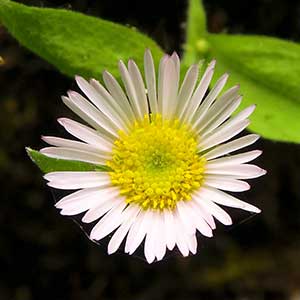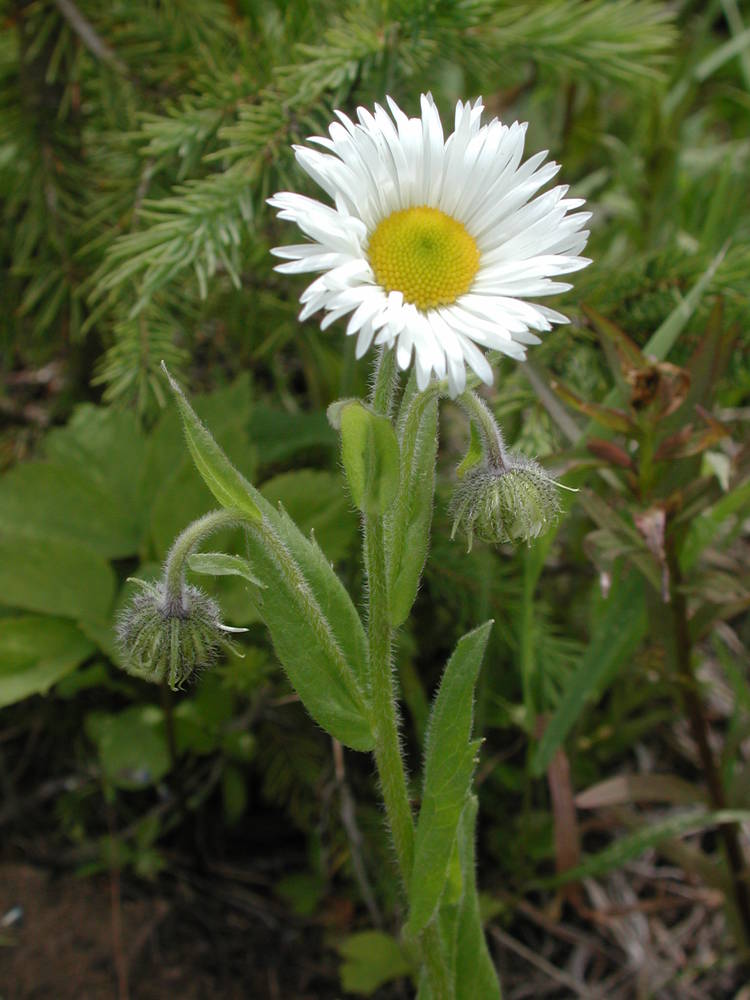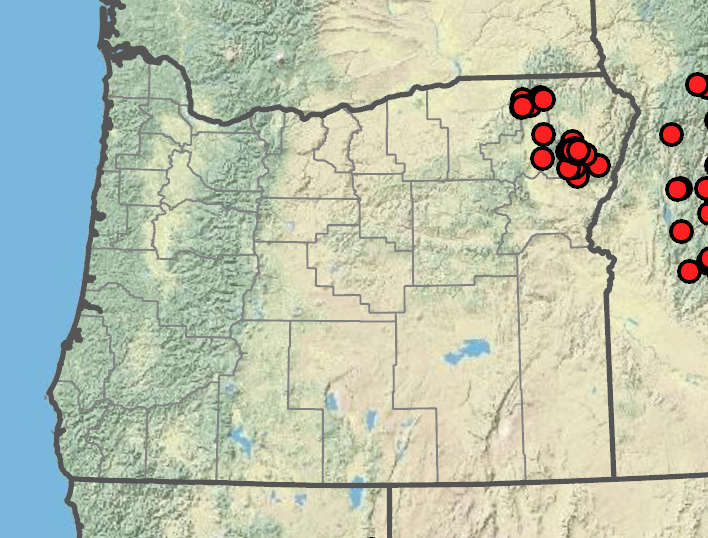Erigeron oreganus
Erigeron coulteri
Gorge daisy, gorge fleabane, Oregon fleabane
Coulter's fleabane
decumbent to erect; hirsute with unequal hairs, sparsely glandular.
erect, sparsely villous, eglandular.
persistent, obovate, 15–90 × 5–20 mm;
margins coarsely serrate to shallowly lobulate;
surfaces sparsely to moderately hirsute to strigose.
occasionally withering by flowering, broadly oblanceolate-elliptic, 40–150 × 10–25 mm;
margins entire or occasionally with poorly developed teeth;
surfaces sparsely strigose or hirsute, eglandular.
obovate to elliptic; little or not reduced distally;
surfaces sparsely to moderately hirsute.
lanceolate to elliptic, 10–80 × 2.5–25(30) mm, gradually reduced distally, bases clasping;
margins entire or with minute teeth.
4–7 × 9–15 mm.
5–8 × 11–17 mm.
30–60, pink to purple;
rays 4–5 × 0.5–1 mm.
60–110, white;
rays 8–15 × 0.5–1 mm.
corollas 3–5 mm.
corollas 3–5 mm.
in 2–3 series, pale green with dark green medial stripe;
surfaces remotely hirsute, strongly stipitate-glandular.
in 2–3 series;
surfaces moderately to densely hirsute or villous, eglandular to minutely glandular.
2–3 mm, moderately strigose;
inner pappi of several unbarbed to weakly barbellate twisted bristles.
1.5–2 mm, sparsely strigose;
inner pappi of numerous barbellate bristles.
1–4, radiate.
1(3), radiate.
=18.
Erigeron oreganus
Erigeron coulteri
Shady cliffs, rocky slopes, crevices. Flowering May–Aug. 100–400 m. Casc. WA. Native.
This uncommon species is found only in the Columbia River Gorge.
Moist coniferous forests, wet meadows. Flowering Jun–Aug. 1100–2000 m. BW. CA, ID, NV; northeast to MT, east to WY, southeast to NM. Native.
James Riser, Stephen Meyers
James Riser, Stephen Meyers





